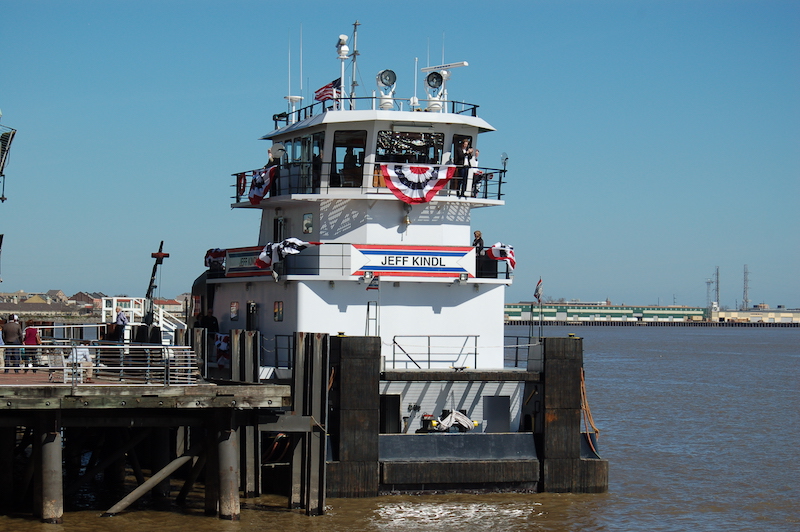It’s never a good thing when one of the largest companies in your industry decides to file for bankruptcy. Such news sends shivers down the spine of everyone, from CEOs to deck hands to suppliers.
But financial, management and market circumstances often dictate such decisions, and many times they are for the best, enabling the company to reorganize, redirect, reinvest and forestall outright closure.
Troubles at American Commercial Barge Line (ACBL), one of the largest barge operators with a fleet of 3,550 covered hopper and open barges for dry products and tank barges for liquids that operate mostly along the Mississippi River system, have been mounting for the past few years.
Based in Jeffersonville, Ind. and in operation since 1915, the company officially filed for Chapter 11 bankruptcy last Friday at the U.S. Bankruptcy Court in Houston, seeking court approval of an agreement with a group of lenders to restructure more than $1 billion of debt. It’s not the first blush with bankruptcy, and the company rebounded from a filing in 2003; it was bought by equity firm Platinum Equity LLC for nearly $800 million in 2010.
ACBL started to feel the pinch about four years ago when a slowdown hit the barge market. The company closed JeffBoat, its shipbuilding arm that was one of the country’s largest inland shipbuilders, in 2018 citing poor market conditions. It has invested heavily in its fleet and operations in recent years and sold some of its barges to Campbell Transportation in 2017.
Then the downward spiral accelerated: U.S. manufacturing continued to stagnate, causing a weakening in the demand for dry bulk shipping. Historic flooding and high water along the Mississippi last year were unprecedented and long-lasting, forcing the idling of barge fleets and the disruption of river commerce for many months. And the Trump administration’s trade war with China didn’t help as it dragged on, essentially drying up the biggest market the U.S. has for soybean exports — which is one of ACBL’s biggest cargoes.
“During these lower demand periods in the barge market, ACBL could just not carry their existing debt load. With this pre-packed restructuring plan (meaning the terms of restructuring are already agreed to by the parties), we will reduce our debt by nearly $1 billion dollars, saving us nearly $160 million a year in cash cost for finance and amortization payments,” Mark Knoy, ACBL’s president and CEO, told me in an interview just before the Feb. 7 filing.
“We will also get a $200 million cash infusion that will provide more opportunity to invest in the industry in smarter ways, with equity versus more debt. This plan will put us back on the prowl for growth and expansion opportunities.”
Although he believes the fundamentals of the barge industry are strong, Knoy said “the dynamics of supply and demand, the cost of equipment and frankly we just over leveraged ourselves,” which happens when a company takes on too much debt.
“In 2014-2015, business margins were much greater than they were today and we entered into these slow periods and we struggled carrying that heavy debt load and really weren’t able to meet those challenges.”
He called the filing “significant and unique,” in that it is a pre-packaged plan aimed at reducing debt by $1 billion.
“This is extremely good for us and also for the industry because we probably have $50 million a month in trade credit out in the industry and you’d hate to see those people get hurt by our demise, so with the term loan lenders coming in and exchanging debt for equity and providing $200 million in liquidity, I think it will make ACBL a very strong competitor once again,” said Knoy, who has headed the company since 2011.
“I think most of our competitors will be standing up and taking notice of that. We’ll have as good a balance sheet as just about anybody in the industry if not better, so I think it will change our competitiveness in the marketplace considerably.”
An article in freightwaves.com on Monday interestingly suggested that the bankruptcy could be good for barging as ACBL would not be inclined to take contracts at lower rates — which could have rate repercussions in both dry and liquid sectors of the industry. It also notes that although there has been speculation that ACBL might divest its tank barges — perhaps to Kirby — this is unlikely in light of the expected investment in the business.
Knoy cited loss of the soybean market, volatile weather and “significant unplanned and planned closures of waterways infrastructure over the past few years” as major factors.
“But certainly a heady market would have helped offset some of that, but part of the problem last year was that you just could not deliver freight,” he added. “We spent nearly $100 million of extra costs to deliver 20 percent less freight, so those numbers just don’t work.” He estimates that the company lost $200 million over the last couple of years.
Knoy, who follows a family tradition in the riverboat business and started his career as a deckhand, has been meeting with employees and mariners to explain the filing.
“I’ve gotten great feedback,” he said in a video message to workers. “They support the actions we’re taking. They have confidence in us and our future.” He said the company will be operating normally during the reorganization.
ACBL’s predicament reflects broader difficulties facing many in the inland barge industry. Recovery from market slowdowns, unprecedented weather events, international trade disputes and the effect of an over capitalization of the fleet will be slow. Read more about it in our April cover story that assesses the state of the inland industry.




